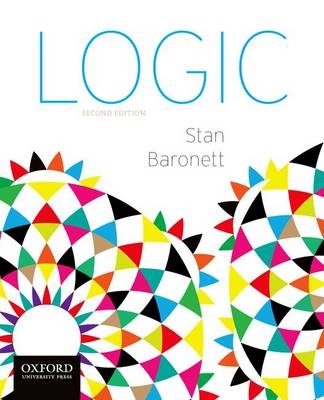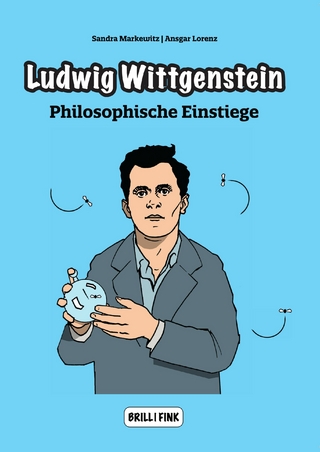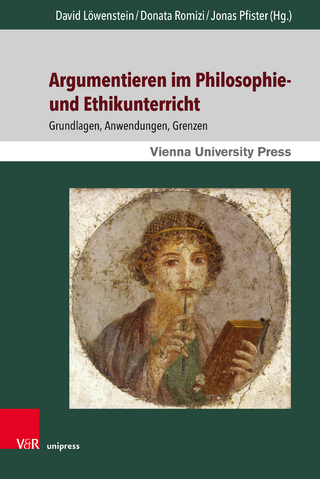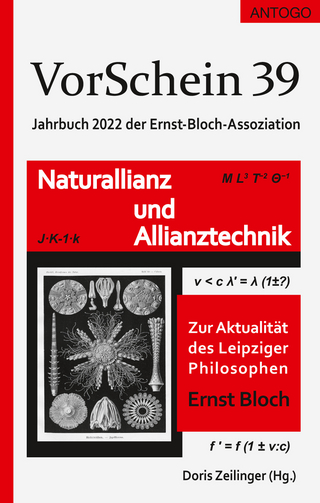
Logic
Oxford University Press Inc (Verlag)
978-0-19-984631-3 (ISBN)
- Titel ist leider vergriffen;
keine Neuauflage - Artikel merken
FEATURES * 2600 exercises--more than 1000 of them new--breathe new life into logic * Real-world examples help bring logic down to earth for students * A unique, extended explanation or model of the answer to the first question of each "Check Your Understanding" section shows students what is expected of their answers * An additional 25% of the exercises are answered at the back of the book * "Profiles in Logic" provide short sketches of logicians, philosophers, mathematicians, and others associated with logic * "Logic Challenge" problems present puzzles and paradoxes that end each chapter on a fun note * Additional pedagogical elements--marginal definitions, key terms, a glossary, reference boxes, and bulleted chapter summaries--make the material even more accessible * Detailed guides help students learn to create "truth tables" and Venn diagrams SUPPORT PACKAGE An Instructor's Manual with Computerized Test Bank on CD includes: Solutions to all exercises in the book, enhanced by explanations and answers that elucidate the details of the correct answers Key Terms and a summary for each chapter A customizable Computerized Test Bank--with multiple-choice, true/false, and fill-in-the-blank questions--that allows instructors to give exams or homework problems that can be auto-graded A traditional "pencil-and-paper" Test Bank and answer key containing the same questions as the Computerized Test Bank PowerPoint-based lecture outlines The Instructor's Manual with Computerized Test Bank and the traditional Test Bank are also available in printed format.
A Companion Website offers: Instructor Resources (password-protected): A downloadable version of the Instructor's Manual (except for the Test Bank and the exercise solutions) PowerPoint-based lecture outlines Student Resources: Brief chapter summaries Interactive Flash Cards with key terms and definitions Web links and other media resources Practice quizzes with answers and explanations (includes questions answered in the book and new, original questions) The Learning Management System Cartridges include, in a fully downloadable format: Instructor's Manual and Computerized Test Bank (exams and homework problems can be auto-graded) Student material from the companion website The Perfect Text for Your Course ...No Matter How You Teach It Your course is unique; you have your own teaching philosophy and style. Whether you teach traditional Introduction to Logic, Critical Thinking/Informal Logic, or Formal Logic, Baronett: Logic, Second Edition, can be tailored to fulfill your course needs. We'll make it easy for you; choose one of our Alternate Editions or build the book you want, chapter by chapter. Option 1.
Author Stan Baronett has suggested four Alternate Editions that may work for you. Each Alternate Edition comes in full color, with answers to problems, a full glossary, and an index. The books are in stock and available for ordering. Please see the ISBN information below. Logic: Concise Edition Chapters 1, 3, 4, 5, 6, 7, 8 Order using ISBN: 978-0-19-994129-2 Logic: An Emphasis on Critical Thinking and Informal Logic Chapters 1, 2, 3, 4, 10, 11, 12, 13 A-E, 14, 15 Order using ISBN: 978-0-19-994128-5 Logic: An Emphasis on Formal Logic Chapters 1, 5, 6, 7, 8, 9 Order using ISBN: 978-0-19-994126-1 Logic: With Diagramming used in Chapter 4. Informal Fallacies Full text Order using ISBN: TO COME Option 2. Create your own customized textbook by choosing the specific chapters that you need for your course. Please contact your Oxford University Press Sales Representative or call 800.280.0280 for details.
Stan Baronett is the author of Logic, First Edition.
EACH CHAPTER ENDS WITH A SUMMARY, KEY TERMS, AND A LOGIC CHALLENGE; PART I. SETTING THE STAGE; CHAPTER 1. WHAT LOGIC STUDIES; A. STATEMENTS AND ARGUMENTS; B. RECOGNIZING ARGUMENTS; C. ARGUMENTS AND EXPLANATIONS; D. TRUTH AND LOGIC; E. DEDUCTIVE AND INDUCTIVE ARGUMENTS; F. DEDUCTIVE ARGUMENTS: VALIDITY AND TRUTH; Logical Form; Counterexamples; G. INDUCTIVE ARGUMENTS: STRENGTH AND TRUTH; TECHNIQUES OF ANALYSIS; PART II. INFORMAL LOGIC; CHAPTER 2. LANGUAGE MATTERS; A. INTENSION AND EXTENSION; Terms, Use, and Mention; Two Kinds of Meaning; Proper Names; B. USING INTENSIONAL DEFINITIONS; Synonymous Definitions; Word Origin Definitions; Operational Definitions; Definition by Genus and Difference; C. USING EXTENSIONAL DEFINITIONS; Ostensive Definitions; Enumerative Definitions; Definition by Subclass; D. APPLYING DEFINITIONS; Stipulative Definitions; Lexical Definitions; Functional Definitions; Precising Definitions; Theoretical Definitions; Persuasive Definitions; E. GUIDELINES FOR INFORMATIVE DEFINITIONS; F. COGNITIVE AND EMOTIVE MEANING; G. FACTUAL AND VERBAL DISPUTES; CHAPTER 3. DIAGRAMS AND ANALYSIS; A. THE BASICS OF DIAGRAMMING ARGUMENTS; B. INCOMPLETE ARGUMENTS; C. RHETORICAL LANGUAGE; Rhetorical Questions; Rhetorical Conditionals; Rhetorical Disjunctions; D. NECESSARY AND SUFFICIENT CONDITIONS; CHAPTER 4. INFORMAL FALLACIES; A. FALLACIES OF RELEVANCE; 1. Argument Against the Person; 2. Tu Quoque; 3. Appeal to the People; 4. Appeal to Pity; 5. Appeal to Force; 6. Appeal to Ignorance; 7. Missing the Point; 8. Appeal to an Unqualified Authority; Summary of Fallacies of Relevance; B. FALLACIES OF UNWARRANTED ASSUMPTION; 9. Begging the Question; 10. Complex Question; 11. Biased Sample; 12. Accident; 13. Hasty Generalization; 14. Misleading Precision; 15. False Dichotomy; 16. False Dilemma; 17. Coincidence; 18. Post Hoc Fallacy; 19. Common Cause Fallacy; 20. Slippery Slope; Summary of Fallacies of Unwarranted Assumption; C. FALLACIES OF AMBIGUITY OR DIVERSION; 21. Equivocation; 22. Amphiboly; 23. Composition; 24. Division; 25. Emphasis; 26. Straw Man Fallacy; 27. Red Herring Fallacy; Summary of Fallacies of Ambiguity or Diversion; D. RECOGNIZING FALLACIES IN ORDINARY LANGUAGE; PART III. FORMAL LOGIC; CHAPTER 5. CATEGORICAL PROPOSITIONS; A. CATEGORICAL PROPOSITIONS; B. QUANTITY, QUALITY, AND DISTRIBUTION; C. THE SQUARE OF OPPOSITION; D. CONVERSION, OBVERSION, AND CONTRAPOSITION; Conversion; Obversion; Contraposition; E. EXISTENTIAL IMPORT; F. THE MODERN SQUARE OF OPPOSITION; G. CONVERSION, OBVERSION, AND CONTRAPOSITION REVISITED; H. VENN DIAGRAMS AND THE TRADITIONAL SQUARE; I. TRANSLATING ORDINARY LANGUAGE INTO CATEGORICAL PROPOSITIONS; Missing Plural Nouns; Nonstandard Verbs; Singular Propositions; Adverbs and Pronouns; "It Is False That ..."; Implied Quantifiers; Nonstandard Quantifiers; Conditional Statements; Exclusive Propositions; "The Only"; Propositions Requiring Two Translations; CHAPTER 6. CATEGORICAL SYLLOGISMS; A. STANDARD-FORM CATEGORICAL SYLLOGISMS; B. DIAGRAMMING IN THE MODERN INTERPRETATION; Diagramming A-propositions; Diagramming E-propositions; Diagramming I-propositions; Diagramming O-propositions; Wrapping Up the X; Is the Syllogism Valid?; C. DIAGRAMMING IN THE TRADITIONAL INTERPRETATION; A-propositions; E-propositions; When Both Interpretations Give the Same Results; D. MOOD AND FIGURE; E. RULES AND FALLACIES; F. ORDINARY LANGUAGE ARGUMENTS; Reducing the Number of Terms in an Argument; Paraphrasing Ordinary Language Arguments; Categorical Propositions and Multiple Arguments; G. ENTHYMEMES; H. SORITES; CHAPTER 7. PROPOSITIONAL LOGIC; A. LOGICAL OPERATORS AND TRANSLATIONS; Simple and Compound Statements; Negation; Conjunction; Disjunction; Conditional Statements; Distinguishing "If" from "Only if"; Biconditional; B. COMPLEX STATEMENTS; Well-Formed Formulas; Main Operator; Translations and the Main Operator; C. TRUTH FUNCTIONS; Defining the Five Logical Operators; Negation; Conjunction; Disjunction; Conditional; Biconditional; Operator Truth Tables and Ordinary Language; D. TRUTH TABLES FOR PROPOSITIONS; Arranging the Truth Values; The Order of Operations; Propositions with Assigned Truth Values; E. CONTINGENT AND NONCONTINGENT STATEMENTS; Tautology; Self-Contradiction; F. LOGICAL EQUIVALENCE; G. CONTRADICTORY, CONSISTENT, AND INCONSISTENT STATEMENTS; H. TRUTH TABLES FOR ARGUMENTS; Validity; Technical Validity; I. INDIRECT TRUTH TABLES; Thinking Through An Argument; A Shorter Truth Table; Necessary and Sufficient Conditions; Argument Form; Examining Statements for Consistency; CHAPTER 8. NATURAL DEDUCTION; A. NATURAL DEDUCTION; B. IMPLICATION RULES I; Modus Ponens (MP); Modus Tollens (MT); Hypothetical Syllogism (HS); Disjunctive Syllogism (DS); Justification--Applying the Rules of Inference; C. TACTICS AND STRATEGY; Working Through a Proof; D. IMPLICATION RULES II; Constructive Dilemma (CD); Simplification (Simp); Conjunction (Conj); Addition (Add); E. REPLACEMENT RULES I; De Morgan (DM); Commutation (Com); Association (Assoc); Distribution (Dist); Double Negation (DN); F. REPLACEMENT RULES II; Transposition (Trans); Material Implication (Impl); Material Equivalence (Equiv); Exportation (Exp); Tautology (Taut); G. CONDITIONAL PROOF; H. INDIRECT PROOF; CHAPTER 9. PREDICATE LOGIC; A. TRANSLATING ORDINARY LANGUAGE; Singular Statements; Universal Statements; Particular Statements; Paying Attention to Meaning; B. FOUR NEW RULES OF INFERENCE; Universal Instantiation; Universal Generalization; Existential Generalization; Existential Instantiation; Summary of the Four Rules; Tactics and Strategy; C. CHANGE OF QUANTIFIER; D. CONDITIONAL AND INDIRECT PROOF; Conditional Proof; Indirect Proof; E. PROVING INVALIDITY; Counterexample Method; Finite Universe Method; Indirect Truth Tables; F. RELATIONAL PREDICATES; Translations; Proofs; A New Restriction; Change of Quantifier; Conditional Proof and Indirect Proof; G. IDENTITY; Simple Identity Statements; "Only"; "The Only"; "No ... Except"; "All Except"; Superlatives; "At Most"; "At Least"; "Exactly"; Definite Descriptions; Summary of Identity Translations; Proofs; PART IV. INDUCTIVE LOGIC; CHAPTER 10. ANALOGICAL ARGUMENTS; A. THE FRAMEWORK OF ANALOGICAL ARGUMENTS; B. ANALYZING ANALOGICAL ARGUMENTS; Criteria for Analyzing Analogical Arguments; C. STRATEGIES OF EVALUATION; Disanalogies; Counteranalogy; Unintended Consequences; Combining Strategies; CHAPTER 11. LEGAL ARGUMENTS; A. Deductive and Inductive Reasoning; B. Conditional Statements; C. Necessary and Sufficient Conditions; D. Disjunction and Conjunction; E. Analyzing a Complex Rule; F. ANALOGIES; G. THE ROLE OF PRECEDENT; CHAPTER 12. MORAL ARGUMENTS; A. VALUE JUDGMENTS; Justifying "Should"; Types of Value Judgments; Taste and Value; B. MORAL THEORIES; Emotivism; Consequentialism; Egoism; Utilitarianism; Deontology; Situation Ethics; Relativism; Contrasting Moral Theories; C. THE NATURALISTIC FALLACY; D. THE STRUCTURE OF MORAL ARGUMENTS; E. ANALOGIES AND MORAL ARGUMENTS; F. JUSTIFYING MORAL PREMISES; CHAPTER 13. STATISTICAL ARGUMENTS AND PROBABILITY; A. SAMPLES AND POPULATIONS; B. STATISTICAL AVERAGES; C. STANDARD DEVIATION; Dividing the Curve; The Size of the Standard Deviation; How to Calculate Standard Deviation; D. WHAT IF THE RESULTS ARE SKEWED?; E. THE MISUSE OF STATISTICS; F. PROBABILITY THEORIES; A Priori Theory; Relative Frequency Theory; Subjectivist Theory; G. PROBABILITY CALCULUS; Conjunction Methods; Disjunction Methods; Negation Method; H. TRUE ODDS IN GAMES OF CHANCE; I. BAYESIAN THEORY; CHAPTER 14. CAUSALITY AND SCIENTIFIC ARGUMENTS; A. CAUSALITY; B. MILL'S METHODS; Method of Agreement; Method of Difference; Joint Method of Agreement and Difference; Method of Residues; Method of Concomitant Variations; Check Your Understanding 14B; C. LIMITATIONS OF MILL'S METHODS; D. THEORETICAL AND EXPERIMENTAL SCIENCE; E. INFERENCE TO THE BEST EXPLANATION; F. HYPOTHESIS TESTING, EXPERIMENTS, AND PREDICTIONS; Controlled Experiments; Determining Causality; G. SCIENCE AND SUPERSTITION; The Need for a Fair Test; Verifiable Predictions; Nontrivial Predictions; Connecting the Hypothesis and Prediction; Science and Superstition; The Allure of Superstition; CHAPTER 15. ANALYZING A LONG ESSAY; A. CHILDBED FEVER; B. VIENNA; C. MIASM AND CONTAGION; D. SEMMELWEIS' ACCOUNT OF THE DISCOVERY; SUMMARY OF SEMMELWEIS' ACCOUNT; E. INITIAL QUESTIONS; F. A NEW INTERPRETATION
| Verlagsort | New York |
|---|---|
| Sprache | englisch |
| Themenwelt | Geisteswissenschaften ► Philosophie ► Logik |
| ISBN-10 | 0-19-984631-6 / 0199846316 |
| ISBN-13 | 978-0-19-984631-3 / 9780199846313 |
| Zustand | Neuware |
| Haben Sie eine Frage zum Produkt? |
aus dem Bereich


